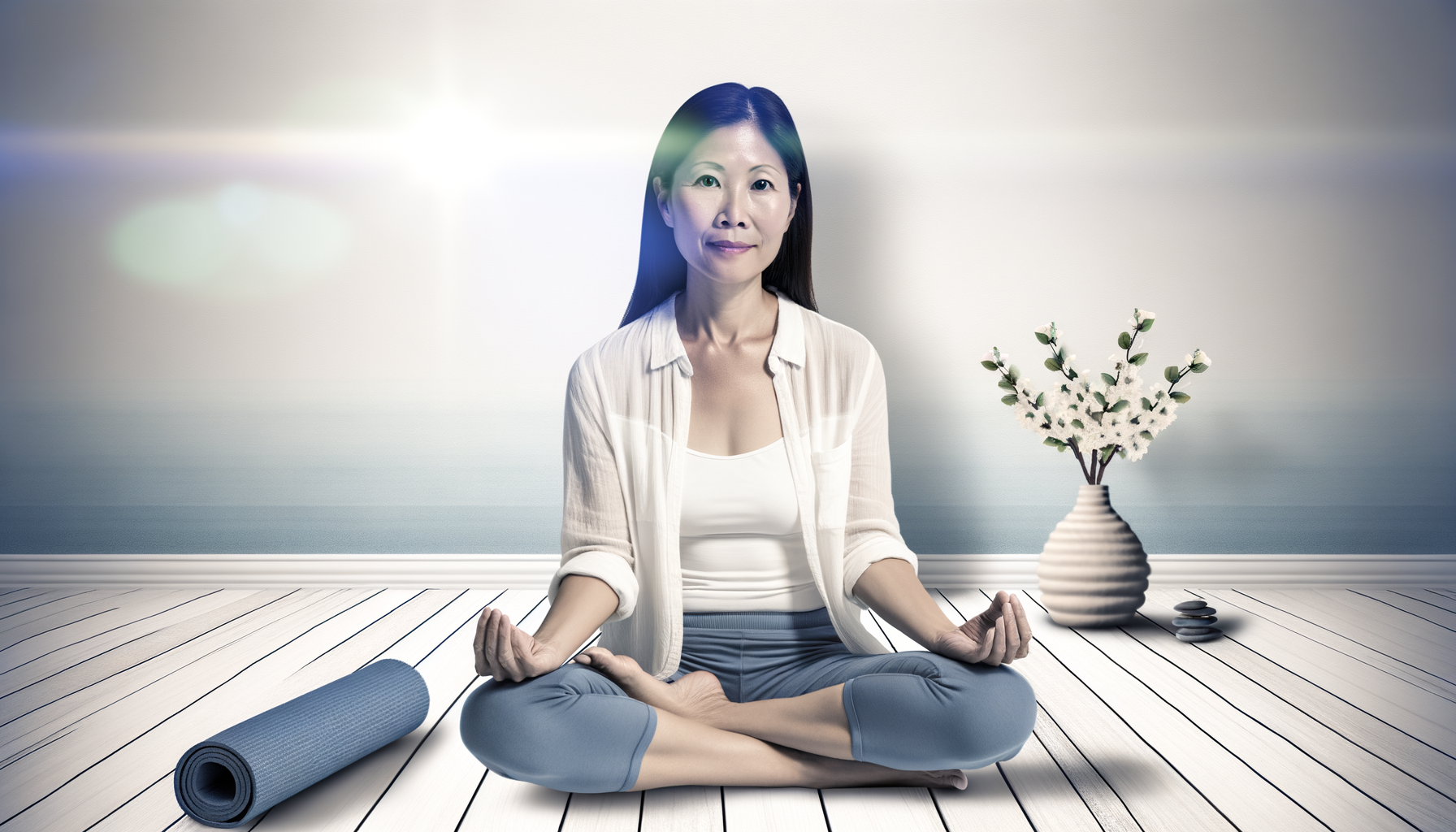
Introduction to Empathy
Defining Empathy
Empathy is the capacity to understand and share the feelings of another. It is a multi-dimensional concept that involves emotional, cognitive, and compassionate aspects. Emotional empathy allows us to feel what another person is experiencing, cognitive empathy enables us to understand another’s perspective intellectually, and compassionate empathy motivates us to take action to help others.
The Importance of Empathy in Relationships
Empathy is the cornerstone of healthy relationships. It fosters deep connections by allowing individuals to feel seen, heard, and valued. When we empathize, we validate others’ experiences and create a supportive environment that nurtures trust and openness. Empathy also equips us to handle conflicts more constructively, as it encourages us to consider the feelings and viewpoints of others before reacting.
Empathy vs. Sympathy: Understanding the Difference
While often used interchangeably, empathy and sympathy are distinct concepts. Sympathy involves acknowledging another person’s emotional hardships and providing comfort and assurance. Empathy, on the other hand, goes a step further by actively imagining and feeling what another person is going through. Sympathy can be seen as feeling for someone, whereas empathy is feeling with them.
The Science of Empathy: How Our Brains Process It
Neuroscientific research has revealed that empathy is hardwired into our brains. The discovery of mirror neurons, which fire both when we perform an action and when we observe someone else performing that action, provides a biological basis for our ability to empathize. These neurons contribute to our capacity to understand others’ emotions and intentions. Additionally, areas of the brain associated with emotion regulation, such as the anterior insula and the anterior cingulate cortex, are activated when we empathize, illustrating the deep neural connections empathy has within our social behavior.
Empathy is not just a moral virtue; it is a fundamental part of human interaction that has evolved over time to enhance our ability to connect and cooperate with one another. By nurturing our empathetic abilities, we not only improve our personal relationships but also contribute to a more compassionate and understanding society.
The Empathetic Approach to Communication
Active Listening Skills
Active listening is the cornerstone of empathetic communication. It involves fully concentrating on the speaker, understanding their message, responding thoughtfully, and remembering the information. Here are key aspects of active listening:
- Full Attention: Give the speaker your undivided attention. This means putting aside distracting thoughts and avoiding multitasking.
- Non-Verbal Signals: Use nods, smiles, and eye contact to show engagement and encourage the speaker.
- Reflecting: Paraphrase or summarize what the speaker has said to confirm understanding.
- Clarifying Questions: Ask questions to clarify points and ensure comprehension.
- Avoiding Interruption: Allow the speaker to finish their thoughts without interjecting or redirecting the conversation to your own experiences.
Non-Verbal Communication Cues
Non-verbal communication plays a vital role in conveying empathy. It includes facial expressions, body language, gestures, and tone of voice. To communicate empathetically:
- Observe: Pay attention to the speaker’s non-verbal cues to gauge their emotions and reactions.
- Mirror: Subtly mirror the speaker’s body language to build rapport and show understanding.
- Control Your Own Cues: Be aware of your own non-verbal signals to ensure they align with your intent to be empathetic and supportive.
Expressing Understanding
Expressing understanding is about validating the speaker’s feelings and experiences. It involves:
- Acknowledgment: Recognize the speaker’s emotions and experiences without judgment.
- Validation: Validate their feelings by expressing that their emotions are understandable and legitimate.
- Supportive Language: Use phrases like “I see,” “That sounds challenging,” or “Your feelings are completely valid” to express solidarity and understanding.
The Role of Vulnerability in Empathetic Dialogue
Vulnerability is essential in creating a two-way empathetic dialogue. It involves:
- Sharing: Open up about your own feelings and experiences when appropriate to create a safe space for mutual sharing.
- Trust: Build trust by showing that you are also open to being vulnerable and that the conversation is a judgment-free zone.
- Boundaries: While being open, maintain healthy boundaries to ensure the conversation remains supportive and does not become overwhelming.
Empathetic communication is not just about being nice; it’s a profound skill that fosters deeper connections and understanding in relationships. By practicing active listening, being attuned to non-verbal cues, expressing understanding, and embracing vulnerability, we can transform our interactions and build stronger, more meaningful connections with those around us.
Empathy in Action: Real-Life Applications
Empathy in Family Dynamics
Within the family unit, empathy acts as a binding agent, creating a fabric of understanding that supports each member through life’s ups and downs. When parents model empathetic behavior, children learn to consider the feelings of siblings and develop emotional intelligence. Family conflicts, a natural part of cohabitation, can be resolved more amicably when empathy is employed, as it allows family members to appreciate the perspectives of others and find common ground. For instance, a teenager’s frustration with curfew rules can be better understood by parents who remember their own desires for independence at that age, leading to more constructive conversations about freedom and responsibility.
Building Empathy in Romantic Relationships
Empathy is the heartbeat of a romantic relationship, keeping the connection between partners alive and resilient. It requires active effort to maintain, such as regularly checking in with one’s partner and truly listening to their experiences without judgment. Celebrating successes with genuine joy and offering comfort during hardships without trying to immediately “fix” the problem are empathetic actions that strengthen the bond. When both partners practice empathy, they create a supportive environment that nurtures growth and deepens intimacy.
Fostering Empathy in Friendships
Friendships thrive on mutual understanding and shared experiences. Empathy allows friends to be present for each other in meaningful ways, whether it’s rejoicing in one another’s achievements or providing a shoulder to lean on during tough times. An empathetic friend recognizes when to offer advice and when to simply provide a listening ear. By validating each other’s feelings and experiences, friends build a foundation of trust that can endure life’s challenges.
Empathy in the Workplace
In the professional realm, empathy can transform workplace culture, leading to increased collaboration, innovation, and employee satisfaction. Leaders who demonstrate empathy are more likely to inspire loyalty and discretionary effort from their teams. Empathy also plays a crucial role in customer relations, where understanding and addressing the emotional needs of clients can lead to better service and customer loyalty. Moreover, empathy fosters diversity and inclusion by encouraging an environment where all voices are heard and valued, ultimately driving the organization towards greater success.
By integrating empathy into these key areas of life, individuals and communities can experience profound transformation, leading to more harmonious and fulfilling relationships.
The Benefits of Empathy
Strengthening Bonds and Trust
Empathy is the cornerstone of building strong, trusting relationships. When we empathize with others, we understand their emotions and perspectives, which fosters a deeper connection. This connection is crucial in forming bonds that are resilient and enduring. In relationships where empathy is practiced, individuals feel heard and validated, leading to increased trust. Trust, in turn, is the foundation upon which strong relationships are built, whether they be personal, familial, or professional.
Enhancing Emotional Well-being
Empathy contributes significantly to our emotional well-being. By recognizing and sharing in the feelings of others, we not only provide support but also alleviate our own stress. Empathy allows us to experience a range of emotions that enrich our emotional lives and promote psychological health. Moreover, empathetic interactions can lead to the release of oxytocin, often referred to as the “bonding hormone,” which enhances feelings of warmth and connection, further contributing to our emotional well-being.
Promoting Cooperation and Conflict Resolution
Empathy plays a pivotal role in cooperation and conflict resolution. By understanding the perspectives and feelings of others, we are better equipped to find common ground and work towards mutually beneficial solutions. Empathy allows us to approach conflicts with a mindset of understanding rather than confrontation, which is essential for resolving disputes amicably. It enables us to navigate differences with sensitivity and respect, leading to more productive and cooperative interactions.
Cultivating a Supportive Community
When empathy is practiced within a community, it creates an environment where individuals feel supported and understood. Empathy encourages us to help those in need, to stand up for others, and to work together towards common goals. It fosters inclusivity and respect for diversity, as we learn to appreciate the unique experiences and challenges of others. A community grounded in empathy is one where members are empowered to contribute positively, creating a nurturing and supportive atmosphere for all.
In conclusion, empathy has the transformative power to strengthen our relationships, enhance our emotional well-being, promote cooperation, and cultivate a supportive community. By walking in the shoes of others, we open ourselves up to a world of deeper understanding and connection, which is essential for personal growth and societal harmony.
Challenges and Misconceptions
The Risk of Emotional Burnout
Empathy requires emotional investment, and while it can be a source of deep connection and understanding, it also carries the risk of emotional burnout. This occurs when individuals consistently absorb the emotional weight of others’ experiences, leading to feelings of exhaustion, detachment, and a diminished ability to empathize. To mitigate this risk, it’s crucial to practice self-care, set emotional boundaries, and seek support when needed.
Navigating Boundaries
Understanding where to draw the line between oneself and others is a delicate aspect of empathy. Navigating boundaries involves recognizing that while we can share in others’ feelings, their experiences are not our own. Establishing clear boundaries helps prevent over-identification and maintains a healthy balance between supporting others and preserving one’s emotional well-being.
Debunking the ‘Empathy is Weakness’ Myth
A common misconception is that empathy is a sign of weakness, particularly in competitive or high-stakes environments. However, this couldn’t be further from the truth. Empathy is a strength that fosters trust, collaboration, and effective problem-solving. Debunking the ‘Empathy is Weakness’ myth is essential in promoting a culture that values emotional intelligence as a key component of success.
Overcoming Empathy Deficits
Not everyone finds it easy to empathize, and some may experience what’s known as empathy deficits. These can stem from a variety of factors, including neurological differences, past traumas, or a lack of role models for empathetic behavior. Overcoming these deficits involves intentional practice, such as engaging in active listening, mindfulness exercises, and seeking out diverse perspectives to broaden one’s emotional repertoire.
In conclusion, while empathy has the power to transform relationships, it is not without its challenges. By being aware of the potential for emotional burnout, setting and respecting boundaries, dispelling myths about empathy, and working to overcome empathy deficits, we can harness the full potential of empathy to enrich our connections with others.
Developing Your Empathetic Abilities
Mindfulness and Self-awareness Exercises
Empathy begins with understanding oneself. Mindfulness and self-awareness exercises are foundational practices that can enhance your empathetic abilities. By engaging in mindfulness meditation, you can learn to observe your thoughts and feelings without judgment, which is a crucial step in recognizing similar experiences in others. Self-awareness exercises, such as journaling or reflective questioning, can help you understand your emotional triggers and biases, allowing you to approach others with an open heart and mind.
Practicing Empathy in Daily Life
Empathy is a skill that can be honed through daily practice. Start by engaging in active listening, where you fully concentrate on what the other person is saying, rather than planning your response. Pay attention to non-verbal cues, such as body language and tone of voice, to gain a deeper understanding of their emotions. Practice perspective-taking by imagining yourself in the other person’s situation, which can help you respond with genuine empathy. Additionally, challenge yourself to engage with people who have different viewpoints or come from different backgrounds to broaden your empathetic reach.
Learning from Empathetic Role Models
Identify individuals in your life or in history who exemplify empathy and learn from their example. These role models can be mentors, community leaders, or public figures known for their compassionate approach. Observe how they interact with others, how they listen, and how they express understanding and support. You can also read biographies or watch interviews to learn about their thought processes and actions that demonstrate empathy.
Seeking Feedback and Reflecting on Experiences
Improving your empathetic abilities involves a willingness to receive constructive feedback. Ask trusted friends, family members, or colleagues for their honest assessment of your empathetic interactions. Reflect on situations where you may have struggled to show empathy and consider what you could do differently in the future. Regular reflection on your experiences, both positive and negative, is essential for continuous growth in your empathetic abilities.
By incorporating these practices into your life, you can develop a stronger capacity for empathy, which will enrich your relationships and enable you to connect with others on a more profound level. Remember, empathy is not just about understanding others—it’s about connecting with them in a way that is both healing and transformative.
Conclusion: The Path Forward with Empathy
Integrating Empathy into Your Personal Growth Journey
As we have explored the multifaceted nature of empathy, it becomes clear that integrating this skill into our personal growth journey is not just beneficial, but essential. Empathy allows us to connect deeply with others, fostering a sense of understanding and shared humanity. To weave empathy into the fabric of our daily lives, we must practice mindful awareness of our own emotions and those of others, and commit to active listening and open communication. By doing so, we not only enhance our relationships but also contribute to our own emotional intelligence and resilience.
Empathy as a Tool for Social Change
Empathy has the power to transcend personal relationships and become a catalyst for social change. When we empathize with others, especially those from different backgrounds and life experiences, we begin to dismantle barriers and build bridges of understanding. Empathy drives us to take action against injustices and advocate for those whose voices are often unheard. It is a tool that can unify diverse groups and inspire collective action towards a more compassionate and equitable society.
Continuing to Learn and Grow in Empathy
The journey of developing empathy does not have an endpoint; it is a continuous process of learning and growth. To further cultivate our empathetic abilities, we should seek out diverse perspectives, engage in reflective practices such as journaling, and embrace vulnerability in our interactions. By remaining curious and open-minded, we can deepen our understanding of the complex emotional landscapes of those around us and respond with genuine compassion.
Final Thoughts on Empathy and Relationships
In conclusion, empathy is the heartbeat of all meaningful relationships. It is the skill that allows us to truly “walk in someone else’s shoes” and connect with others on a profound level. As we strive to become more empathetic, we not only enrich our own lives but also contribute to a more understanding and connected world. Let us remember the story of the Stone Age man from Man Bac, whose community’s empathy ensured his survival and dignity. May we carry forward this legacy of empathy, not as a mere concept, but as a lived principle that guides our interactions and shapes our relationships.








